Islamic Cairo is one of Egypt’s most fascinating districts, a living testimony to over a thousand years of faith, culture, and artistic brilliance. Recognized as a UNESCO World Heritage Site, it preserves some of the most breathtaking Islamic landmarks in Egypt, from monumental mosques and ancient madrasas to bustling bazaars and grand palaces.
This district is not merely a collection of historic buildings; it’s the spiritual soul of Cairo. As you walk through its narrow lanes, you’ll hear the rhythmic call to prayer, see golden domes shimmering under the Egyptian sun, and feel the timeless pulse of an ancient civilization.
Exploring Islamic Cairo sites gives visitors a window into Egypt’s deep-rooted Islamic identity, shaped through the Fatimid, Ayyubid, and Mamluk eras.
For travelers seeking to experience the beauty and spirituality of Egypt’s Islamic sites, our Egypt vacation packages offer guided tours that bring history to life through expert storytelling and authentic local insight.
The History and Significance of Islamic Cairo
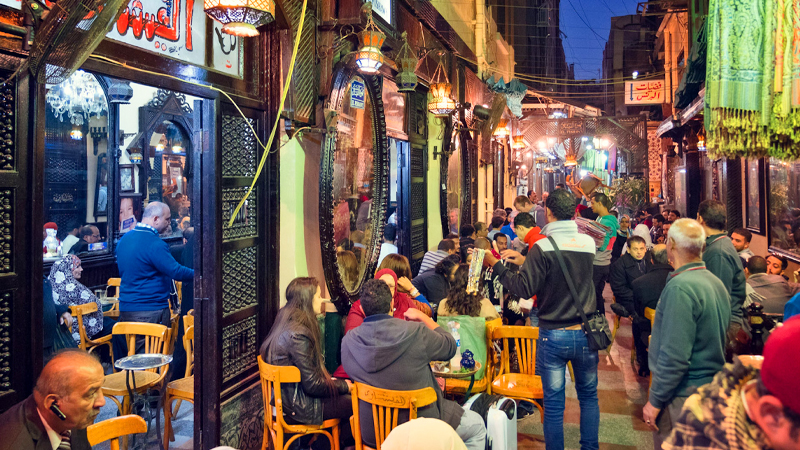
The story of Islamic Cairo began in the 7th century, when Amr Ibn Al-Aas founded Fustat, Egypt’s first Islamic capital. As the centuries passed, Cairo flourished under various dynasties, the Fatimids, Ayyubids, and Mamluks, each leaving behind magnificent structures and an enduring legacy of religious devotion and architectural genius.
During the Fatimid period, Cairo became a center of intellectual and spiritual excellence, home to institutions like Al-Azhar University, which remains one of the world’s oldest centers of Islamic learning.
Under the Mamluks, Cairo reached the height of its architectural splendor with elaborately decorated mosques, madrasas, and sabils that showcased the artistry of Islamic civilization.
Today, Islamic Cairo represents not only Islamic historical sites in Egypt but also the living heart of Egyptian identity, where faith, art, and daily life continue to intertwine seamlessly.
Khan El Khalili Bazaar
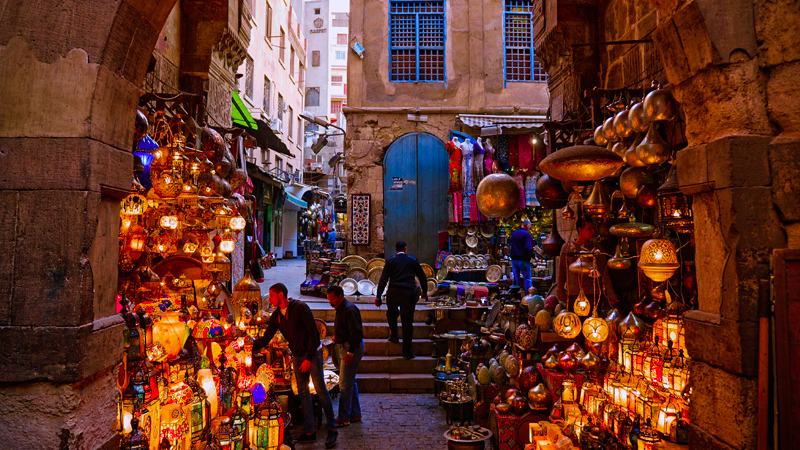
Khan El Khalili Bazaar is the beating heart of Islamic Cairo. Established in the 14th century, this historic marketplace offers a sensory experience filled with the scents of spices, the sparkle of lanterns, and the charm of traditional crafts. Travelers can find everything from silver jewelry and perfumes to handmade textiles.
It’s also an excellent spot to enjoy Egyptian coffee at El Fishawy Café, one of Cairo’s oldest establishments. For many visitors exploring Egypt Islamic sites, a stroll through Khan El Khalili is an unforgettable highlight.
Muhammad Ali Mosque
The Muhammad Ali Mosque, also known as the Alabaster Mosque, dominates the skyline of Cairo from its position within the Citadel. Built in the 19th century by Muhammad Ali Pasha, the mosque reflects Ottoman influence with its grand domes and twin minarets. Inside, the lavish chandeliers and spacious prayer hall exude serenity.
The site not only serves as an architectural marvel but also a symbol of Egypt’s modernization during Muhammad Ali’s reign, making it a must-see among Islamic Cairo sites.
Salah El Din Citadel
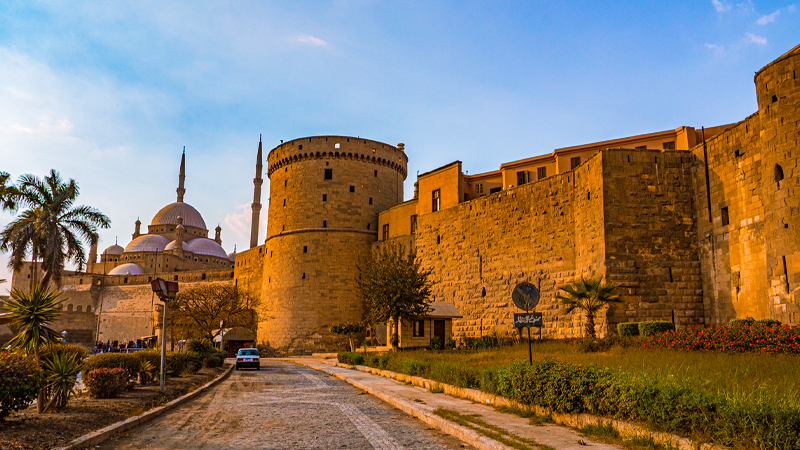
The Salah El Din Citadel, or Cairo Citadel, stands as a powerful fortress built by the legendary Saladin in the 12th century. Originally constructed to protect the city from Crusader attacks, it later became the seat of government for over 700 years.
The Citadel houses several Islamic landmarks in Egypt, including mosques, museums, and royal residences. Its panoramic view over Cairo is one of the best in the city, allowing visitors to witness the blend of history and spirituality that defines Islamic Cairo.
Mosque and Madrasa of Sultan Hasan
This monumental structure, built during the Mamluk period in the 14th century, is one of the grandest examples of Islamic architecture in Egypt. The Mosque and Madrasa of Sultan Hassan impresses with its towering facade and intricate marble designs.
Inside, the massive courtyard and beautifully decorated mihrab reveal the skill of Mamluk artisans. It also functioned as a madrasa, a place for religious study symbolizing the importance of education in Islamic Cairo.
Ibn Tulun Mosque: Cairo’s Oldest Islamic Gem
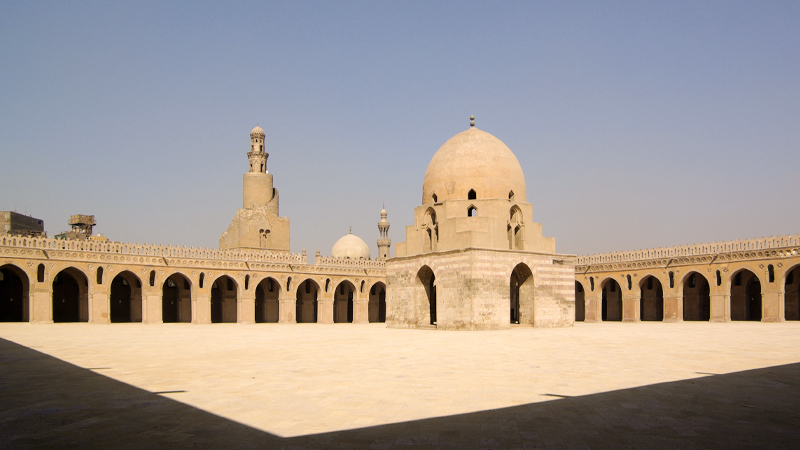
Built in the 9th century by Ahmad Ibn Tulun, the Ibn Tulun Mosque is the oldest surviving mosque in Cairo. Its vast courtyard and spiral minaret reflect early Islamic architectural styles. The mosque’s simplicity and open space evoke a sense of peace and humility.
As one of the most iconic Islamic holy sites in Egypt, it represents the early development of Cairo’s religious landscape and continues to attract visitors for both worship and exploration.
Amr Ibn Al-Aas Mosque: The First Mosque In Africa
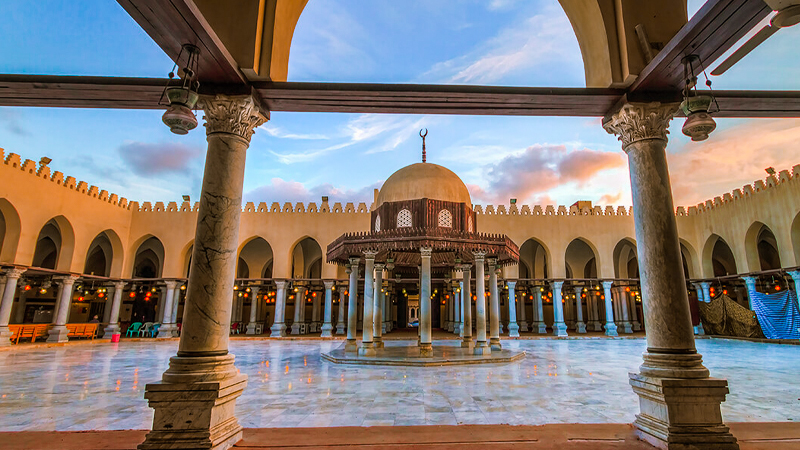
The Amr Ibn Al-Aas Mosque, located in Old Cairo, holds the distinction of being the first mosque built in Africa. Constructed in 641 AD, it marked the beginning of Egypt’s Islamic history.
Though it has been rebuilt multiple times, the mosque remains an essential pilgrimage site and a place of great historical value. Its significance as a cornerstone of Islamic Cairo facts cannot be overstated it stands as a symbol of the spread of Islam throughout Africa.
Al-Azhar Mosque: A Historic Hub of Learning and Spirituality
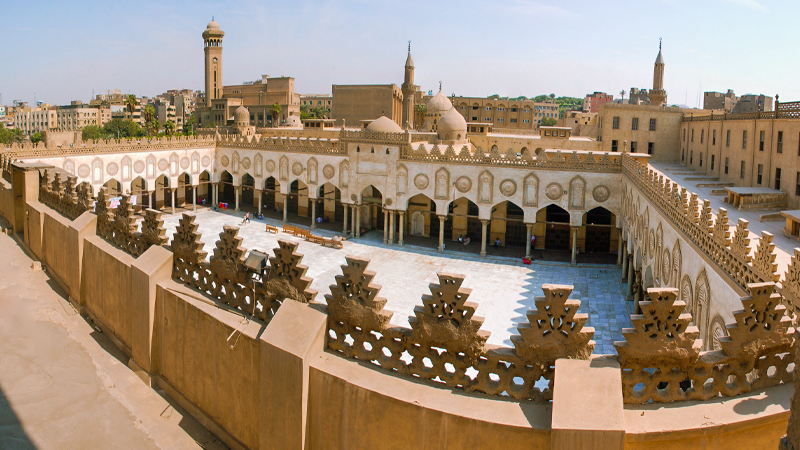
Founded in 970 AD by the Fatimids, Al-Azhar Mosque is one of the most important religious and educational institutions in the Islamic world. It later evolved into Al-Azhar University, which continues to serve as a leading center for Islamic scholarship.
The mosque’s mix of Fatimid, Mamluk, and Ottoman architecture showcases Cairo’s layered history. For travelers exploring Islamic sites in Egypt, Al-Azhar offers both cultural depth and spiritual resonance.
Al-Rifai Mosque: Majestic Architecture and Royal Legacy
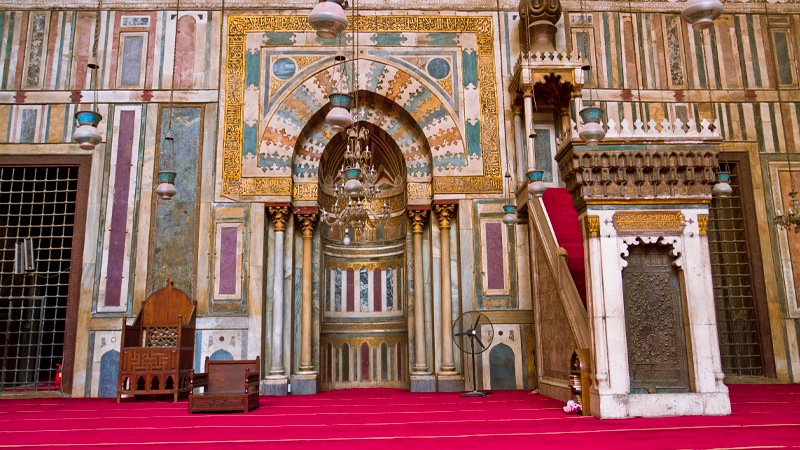
Situated opposite the Mosque of Sultan Hasan, the Al-Rifai Mosque was constructed in the 19th century as a royal burial site. The mosque is home to the tombs of Egyptian royals and even the last Shah of Iran.
Its majestic domes, detailed marble, and elegant mosaics reflect a blend of European and Islamic design influences. Visiting this mosque provides insight into Egypt’s modern Islamic heritage and royal history.
The Islamic Heritage Milestone of Muizz Street in Cairo
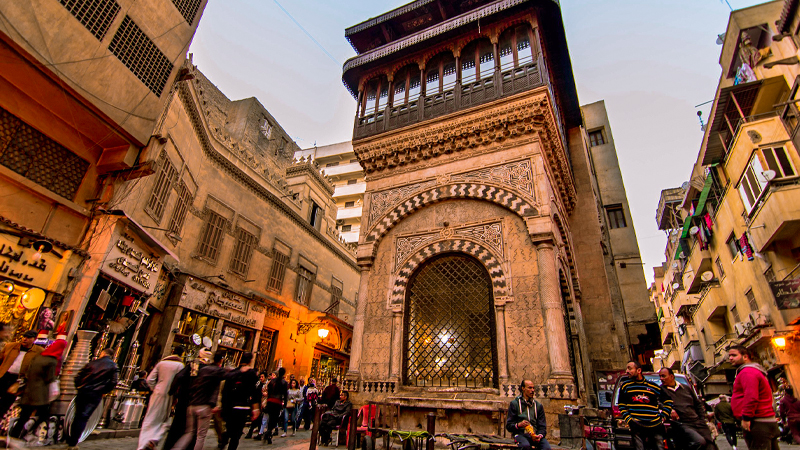
Al-Muizz Street is one of Cairo’s oldest streets and perhaps the most vivid representation of the city’s Islamic history. Stretching through the heart of Islamic Cairo, it’s lined with restored mosques, sabils, and palaces from the Fatimid and Mamluk eras.
Walking along Muizz Street feels like stepping into a living museum of Islamic art and culture, showcasing centuries of Egyptian craftsmanship and religious devotion.
Morsi Abu El Abbas Mosque
Located in Alexandria, the Morsi Abu El Abbas Mosque is one of the most beautiful Islamic landmarks in Egypt. Built in honor of the 13th-century Sufi saint Abu El Abbas al-Mursi, the mosque features stunning domes, ornate minarets, and an intricately designed interior.
Its spiritual atmosphere attracts worshippers and visitors alike. As one of Egypt’s most sacred Islamic sites, it highlights the country’s deep-rooted Sufi traditions.
Abu El-Hagag Mosque
The Abu El-Hagag Mosque in Luxor is built within the walls of the ancient Luxor Temple, symbolizing the coexistence of Egypt’s Pharaonic and Islamic heritage.
Dedicated to the local Sufi saint Abu El-Hagag, the mosque continues to host an annual festival celebrating his life. Its blend of ancient and Islamic architecture makes it one of the most remarkable Islamic historical sites in Egypt.
Al-Aqmar Mosque
Built during the Fatimid era in 1125 AD, the Al-Aqmar Mosque is known for its beautifully decorated stone façade — one of the earliest examples of Cairo’s ornamental architecture.
Its geometric patterns and Kufic inscriptions make it a masterpiece of Islamic art. Located on Al-Muizz Street, it remains a key part of Cairo’s Islamic identity and a must-visit site for travelers exploring Islamic Cairo.
Qalawun Complex
The Qalawun Complex, built in the 13th century, is a striking example of Mamluk architecture. It consists of a mosque, madrasa, and mausoleum, showcasing the multi-functional nature of Islamic buildings.
The interior is adorned with marble, stained glass, and mother-of-pearl inlays. The complex reflects Cairo’s historical prominence as a center for both worship and learning, a hallmark of Egypt’s’s Islamic sites.
Al Hussein Mosque
Al Hussein Mosque is one of Cairo’s most revered religious sites, believed to house the head of Imam Hussein, the grandson of Prophet Muhammad. The mosque is a major pilgrimage destination for Muslims around the world.
Its spiritual significance and stunning architectural design make it one of the holiest Islamic Cairo sites. Located near Khan El Khalili, it’s often visited alongside the bustling bazaar.
Mohamed Ali Manial Palace
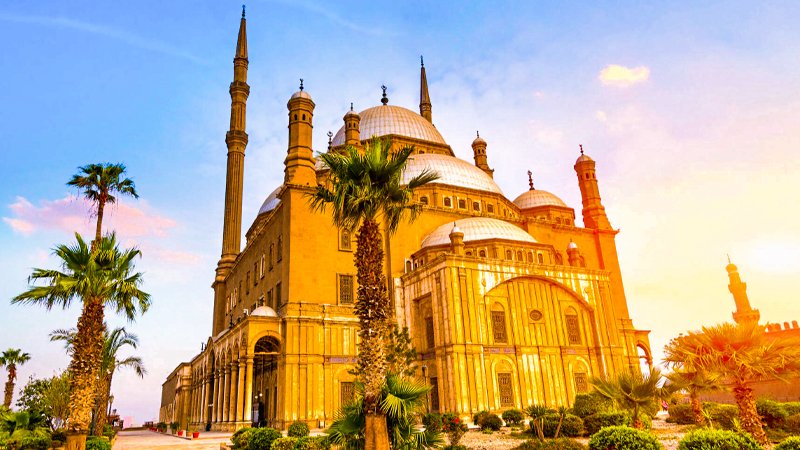
The Mohamed Ali Manial Palace is a splendid example of late 19th-century architecture blending Ottoman, Moorish, and Persian styles. Built by Prince Mohamed Ali, it served as a royal residence and a display of Egyptian artistry.
Today, it’s a museum showcasing Islamic art, manuscripts, and royal collections. It’s a beautiful stop for those exploring Islamic landmarks in Egypt beyond the mosques.
City of the Dead (Al Qarafa)
The City of the Dead, or Al Qarafa, is a vast necropolis in Cairo that dates back to early Islamic times. It’s both a cemetery and a living community, where families have resided for generations.
The area contains several mausoleums and shrines of historic importance, making it one of the most intriguing Islamic historical sites in Egypt. Despite its somber name, it reflects Cairo’s enduring connection between life, faith, and memory.
Hosh al-Basha: The Forgotten Royal Mausoleum of Egypt’s Muhammad Ali Dynasty
Hosh al-Basha, located within the City of the Dead, is the burial place of members of the Muhammad Ali dynasty. The mausoleum’s rich ornamentation and intricate domes reveal a blend of Ottoman and Egyptian styles.
Though often overlooked by tourists, it’s an essential site for those interested in Egypt’s Islamic royal heritage and the artistic craftsmanship that flourished during the 19th century.
Tips for Visiting Islamic Cairo
- Dress Respectfully : Islamic Cairo is home to many mosques and religious sites. Visitors should wear modest clothing long sleeves, long pants or skirts and women should carry a scarf to cover their heads when entering mosques.
- Visit Early in the Morning :The area can get quite crowded during the day, especially around Khan El Khalili and Al-Muizz Street. Arriving early allows you to enjoy a quieter, more atmospheric experience and better photo opportunities.
- Hire a Local Guide : To truly understand the deep history and architecture of Islamic Cairo, consider joining a guided tour through Cairo Egypt Tours. A knowledgeable guide can provide insights into hidden details and lesser-known stories behind each landmark.
- Carry Cash for Souvenirs and Donations :Many small shops and mosques in Islamic Cairo don’t accept credit cards. Having small bills on hand makes it easier to buy souvenirs or make donations at religious sites.
- Stay Hydrated and Wear Comfortable Shoes :Exploring Islamic Cairo involves a lot of walking on uneven ground. Bring water and wear supportive shoes to stay comfortable throughout the day.
- Be Mindful During Prayer Times :When visiting mosques, avoid entering the main prayer areas during prayer times unless you’re participating. Respect the local customs and the spiritual environment.
- Explore Beyond the Main Attractions :While famous sites like Al-Azhar and Sultan Hasan Mosque are must-sees, venture into smaller mosques and alleys — they often hide fascinating architecture and authentic local life.
- Visit in the Cooler Months :The best time to explore Islamic Cairo is from October to April when the weather is mild and pleasant for walking. Summer months can be hot and tiring.
- Combine Islamic Cairo with Other Nearby Attractions :Since Islamic Cairo is centrally located, you can easily combine your visit with a trip to Coptic Cairo or the Egyptian Museum for a full day of history and culture.
- Respect Local Etiquette When Taking Photos :Always ask permission before photographing people, especially inside mosques or local shops. Being polite and respectful goes a long way in ensuring a warm welcome.

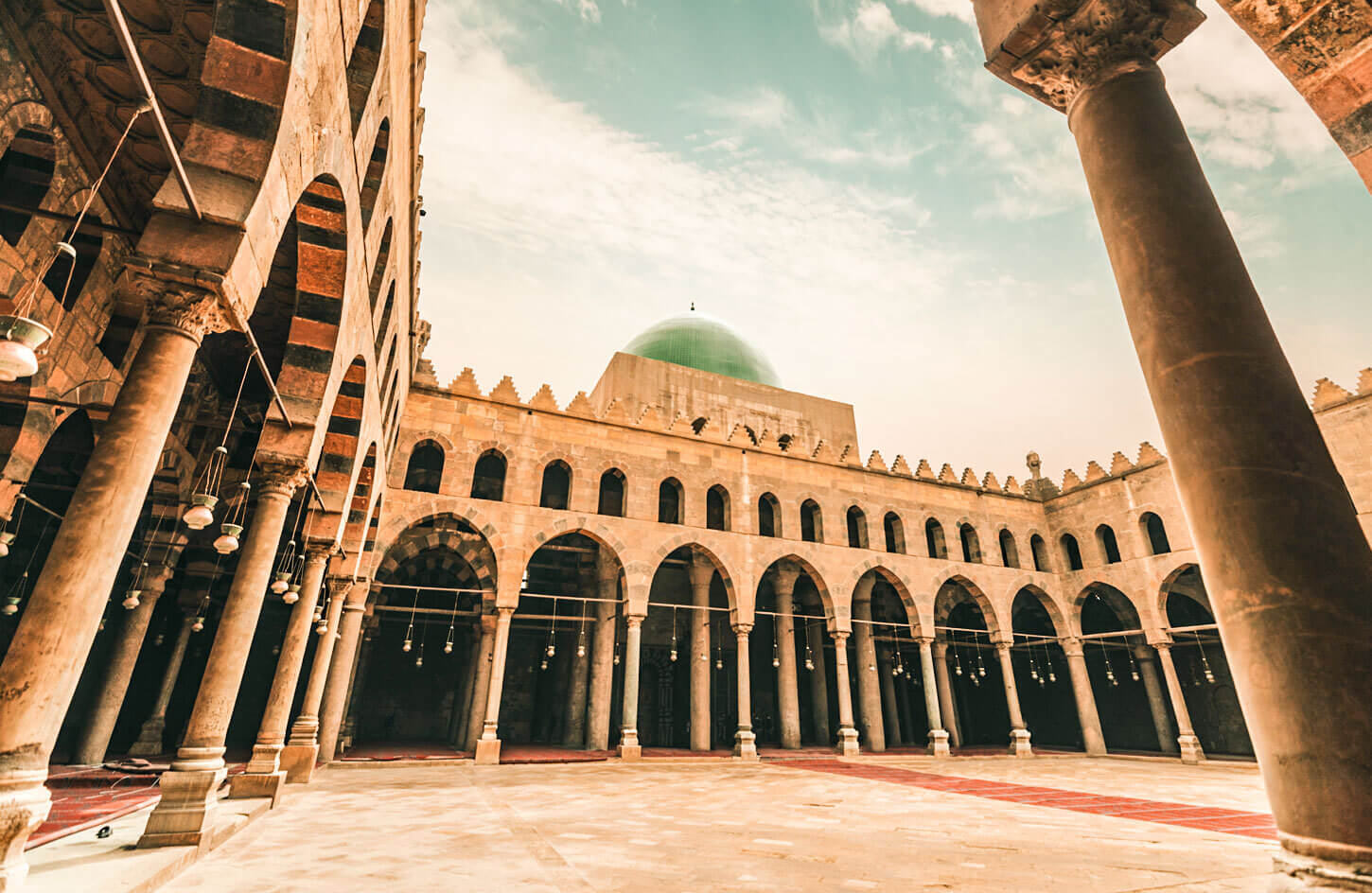

0 Comment